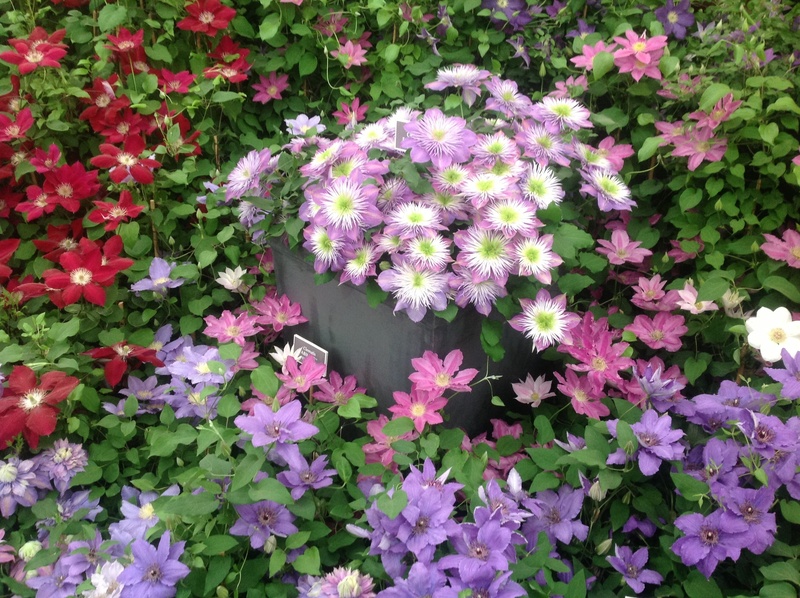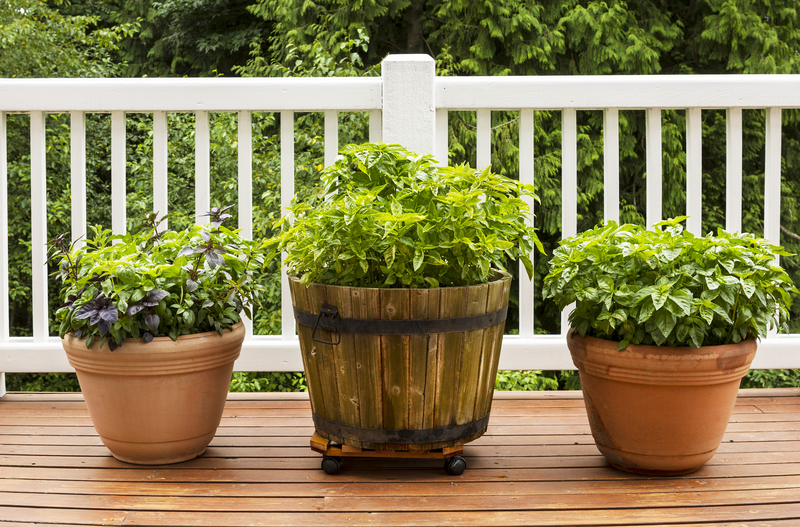Transforming Overgrown Greenery: First Steps to Reviving Your Garden
Posted on 23/08/2025
Transforming Overgrown Greenery: First Steps to Reviving Your Garden
Does your outdoor space resemble a wild jungle more than a cozy retreat? Transforming overgrown greenery into a breathtaking garden is a journey of vision, hard work, and creativity. This comprehensive guide walks you through the essential first steps to breathe new life into your neglected garden, helping you reclaim beauty and tranquility amidst the wilderness.
Why Overgrown Gardens Need Attention
Letting your garden slip into disarray not only impacts curb appeal but also poses risks to your plants, property, and mental well-being. Here's why it's crucial to take action:
- Pest Attraction: Dense foliage and debris become havens for rodents, insects, and plant diseases.
- Hindered Growth: Unchecked weeds and competing plants steal nutrients and water from garden favorites.
- Potential Hazards: Overgrown paths and hidden debris can cause trips, damage tools, and even threaten building foundations.
- Depleted Enjoyment: A neglected green space detracts from outdoor relaxation and play.
Ready to reverse the wild state of your backyard? Discover the crucial stages of reviving your garden in the sections below.

Assessment: Understanding What You're Working With
The foundation for garden transformation is a thorough assessment of your current situation. Before you lift a rake or pruner, spend time getting to know your garden's structure, challenges, and potential.
1. Map Out the Existing Landscape
- Walkthrough: Examine every corner of your garden, noting existing features--trees, shrubs, paths, fences, and overgrown areas.
- Record Findings: Create rough sketches or take photos to identify what should stay, what needs removal, and zones for potential redesign.
- Note Sunlight Patterns: Observe which parts of your garden get full sun, partial shade, or are deeply shaded.
2. Identify Problem Areas
- Weed Infestations: Pinpoint bramble patches, invasive weeds, or massive groundcover that suffocates other plants.
- Dead and Diseased Plants: Check for dying shrubs, decaying trees, or neglected flower beds that need urgent attention.
- Structural Issues: Broken paths, rotting fences, or clogged water features should be flagged for later repair.
Gathering the Right Tools and Supplies
An efficient garden revival begins with being well-equipped. A few essential tools and safety gear make clearing out overgrowth and restoring order faster and easier.
- Pruning Shears and Loppers: Ideal for trimming smaller stems, shrubs, and tree branches.
- Hedge Trimmers: Manual or powered versions can tame unruly hedges and bushes.
- Garden Fork and Shovel: For loosening earth and digging out deep-rooted weeds.
- Rake: Helps gather leaves, grass clippings, and debris from garden beds and lawns.
- Wheelbarrow or Garden Bags: Essential for hauling away green waste and clutter.
- Gloves, Safety Glasses, and Protective Clothing: Protect yourself from scratches, insects, and toxic plants like poison ivy.
- Mower or Strimmer: For tall grass and reclaiming overrun lawns.
Remember, investing in quality tools transforms tedious chores into manageable, rewarding tasks.
Clearing the Clutter: The First Major Step
Overgrown garden restoration starts with clearing away unwanted growth and debris. Focus on eliminating what should not be there, creating a blank canvas for your future visions.
1. Remove Large Debris and Unwanted Items
- Pick up fallen branches, garden waste, and litter. Sort materials--compost what you can, dispose of the rest responsibly.
- Old planters, broken garden furniture, and derelict ornaments should be removed or repurposed.
2. Cutting Back Overgrown Plants
- Begin with Shrubs and Trees: Prune back overgrown limbs to manageable sizes. Remove any visibly dead, diseased, or dangerous branches first.
- Trim Hedges: Cut hedges back into shape but avoid being too severe, which can shock some species.
- Groundcover and Vines: Pull or cut away sprawling vines and invasive groundcovers that smother beds or structures.
3. Tackling Weeds and Invasives
- Pull Weeds Manually: For best results, extract weed roots entirely to prevent regrowth.
- Spot-Treat Stubborn Areas: Persistent invaders may need digging, or (with care) selective eco-friendly herbicidal treatment.
- Check After Rain: Moist soil loosens roots, making weed removal easier and more effective.
Restoring Lawns and Beds to Their Former Glory
With the jungle cleared, your next garden revival step is to rehabilitate grassroots and beds, providing a healthy starting point for new growth.
1. Lawn Recovery Strategies
- Mow High, Then Gradually Lower: Cut tall grass in stages to avoid scalping and stressing the lawn.
- Rake Out Thatch: Remove built-up dead grass and layers of moss or leaves.
- Aerate Compacted Areas: Use a garden fork to poke holes into hard, worn soil, improving water and nutrient movement.
- Top-Dress and Seed: Bare patches should be filled with topsoil and reseeded for even rejuvenation.
2. Reviving Flower and Vegetable Beds
- Loosen the Soil: Use a fork or cultivator to break up compacted earth in beds and borders.
- Add Organic Matter: Mix in compost, leaf mold, or well-rotted manure to boost fertility and structure.
- Redefine Edges: Crisp borders give beds a fresh, finished appearance and prevent grass invasion.
Pruning and Plant Care Fundamentals
Proper pruning is as much about reviving your garden as it is about long-term plant health and vigor. Here's how to approach it:
- Clean Your Tools: Always start with sanitized blades to prevent the spread of disease.
- Remove Dead and Crossed Branches: Clear out anything that looks brittle, broken, or misdirected.
- Shape with Purpose: Prune to encourage airflow, sunlight, and natural shapes, rather than harsh trimmings.
- Know the Plant: Some shrubs and trees flower on old wood; research before aggressive pruning.
Tip: For heavily congested areas, thin out the oldest stems first and remove a percentage each year to avoid excessive shock.
Planning for the Future: Design and Planting Considerations
With the old growth tamed, begin envisioning your transformed garden. Take this opportunity to reimagine layout, planting, and function:
1. Soil Testing and Preparation
- Test pH and Nutrients: Home kits or professional services reveal soil condition, helping select suitable plants.
- Amend Accordingly: Lime acidic soils, add compost to poor earth, or mulch for moisture retention.
2. Sketch a New Layout
- Zoning: Define areas for relaxation, play, entertaining, or growing produce.
- Flow and Focal Points: Consider pathways, sight lines, and standout features--ponds, sculptures, or seating.
3. Choose Resilient and Low-Maintenance Plants
- Native Species: Thrive with less fuss and support biodiversity.
- Perennials Over Annuals: Invest in plants that return every year, reducing workload long term.
- Layer Heights and Textures: Group tall, medium, and low-growing plants for depth and structure.
4. Mulching and Ongoing Weed Control
- Lay Mulch: Bark chips, straw, or gravel suppress weeds, conserve water, and enrich soil.
- Install Edging: Brick, metal, or timber barriers keep lawns and beds neat, preventing backslide into chaos.
Maintaining Your Revived Garden
The true magic of transforming overgrown greenery lies in consistent aftercare. Establish simple routines to keep your outdoor space lush and orderly:
- Weekly Checks: Walk your beds and borders, removing debris and spotting pests before they become problems.
- Seasonal Pruning and Feeding: Trim plants at the right times and feed soil with slow-release fertilizers or homemade compost.
- Regular Mulching: Top up beds to suppress weeds and reduce watering needs.
- Monitor Growth: Watch for overly aggressive species--promptly prune or divide to prevent new overgrowth.

When to Call in Professional Help
Sometimes, a garden's challenges require more than good intentions and elbow grease. Hire a professional if you encounter:
- Massive Tree Removal or Heavy Landscaping: Large stumps, invasive roots, or ground regrading need expertise and equipment.
- Pest or Disease Infestations: Widespread problems are best handled by certified specialists.
- Hazardous Waste: Asbestos, old chemicals, or non-organic rubble require professional disposal.
Transforming Overgrown Greenery: The Start of a Gardening Adventure
Reviving an overgrown garden may seem daunting, but with a clear action plan and steady effort, you'll witness dramatic results. The first steps to reviving your garden--assessment, clearing, and basic care--reveal your space's hidden beauty and set the stage for years of enjoyment. Transforming wild growth into humming gardens is not just about tidiness--it's about reconnecting with nature, fostering well-being, and creating an outdoor haven for family and wildlife alike.
Start today! Embrace each phase of transformation, and soon, your once-forgotten garden will become a flourishing, restful, and inspiring retreat.



